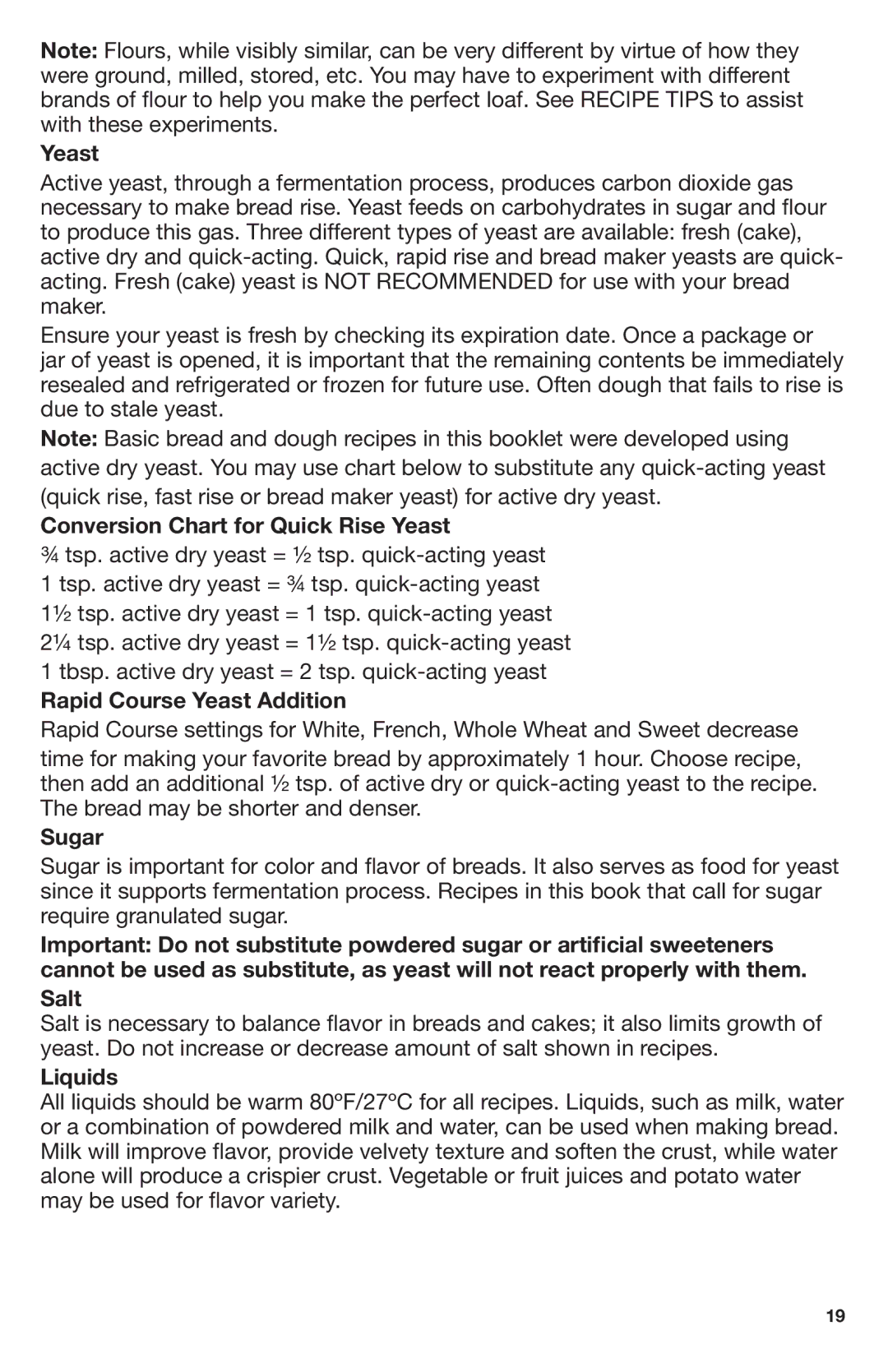Note: Flours, while visibly similar, can be very different by virtue of how they were ground, milled, stored, etc. You may have to experiment with different brands of flour to help you make the perfect loaf. See RECIPE TIPS to assist with these experiments.
Yeast
Active yeast, through a fermentation process, produces carbon dioxide gas necessary to make bread rise. Yeast feeds on carbohydrates in sugar and flour to produce this gas. Three different types of yeast are available: fresh (cake), active dry and
Ensure your yeast is fresh by checking its expiration date. Once a package or jar of yeast is opened, it is important that the remaining contents be immediately resealed and refrigerated or frozen for future use. Often dough that fails to rise is due to stale yeast.
Note: Basic bread and dough recipes in this booklet were developed using active dry yeast. You may use chart below to substitute any
Conversion Chart for Quick Rise Yeast
¾tsp. active dry yeast = ½ tsp.
Rapid Course Yeast Addition
Rapid Course settings for White, French, Whole Wheat and Sweet decrease
time for making your favorite bread by approximately 1 hour. Choose recipe, then add an additional ½ tsp. of active dry or
Sugar
Sugar is important for color and flavor of breads. It also serves as food for yeast since it supports fermentation process. Recipes in this book that call for sugar require granulated sugar.
Important: Do not substitute powdered sugar or artificial sweeteners cannot be used as substitute, as yeast will not react properly with them.
Salt
Salt is necessary to balance flavor in breads and cakes; it also limits growth of yeast. Do not increase or decrease amount of salt shown in recipes.
Liquids
All liquids should be warm 80ºF/27ºC for all recipes. Liquids, such as milk, water or a combination of powdered milk and water, can be used when making bread. Milk will improve flavor, provide velvety texture and soften the crust, while water alone will produce a crispier crust. Vegetable or fruit juices and potato water may be used for flavor variety.
19
